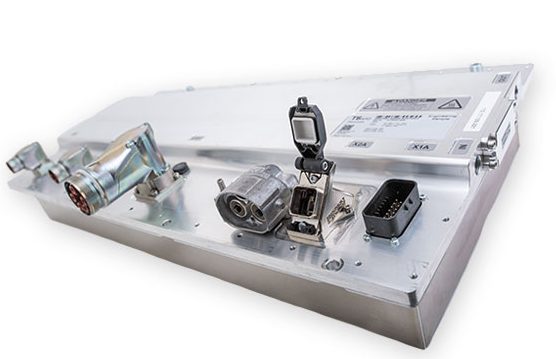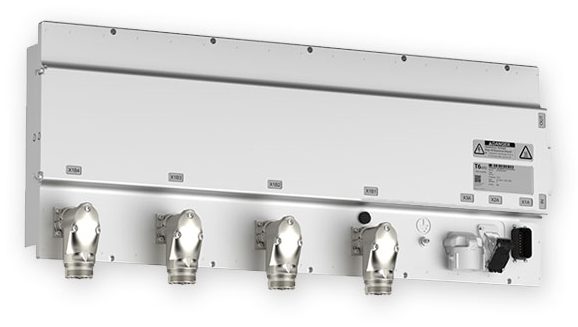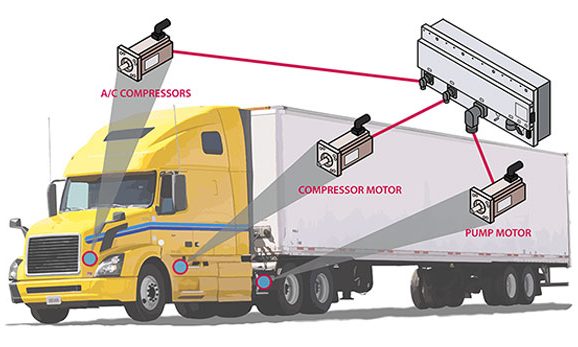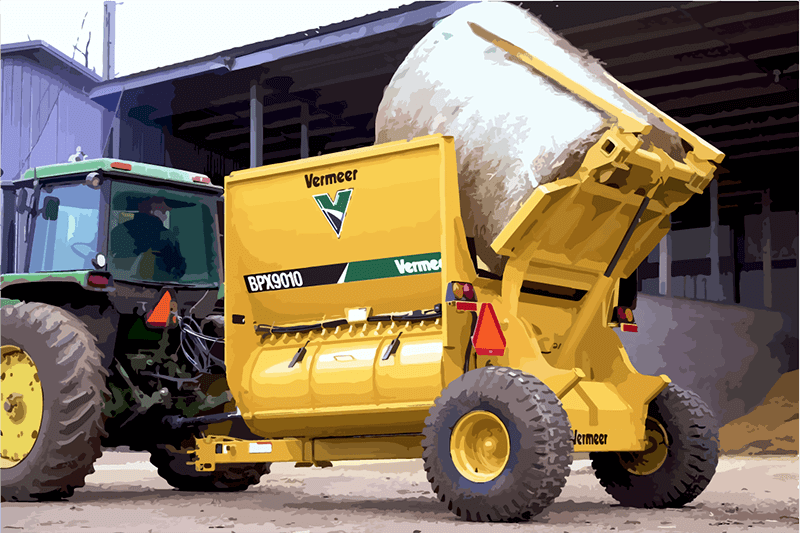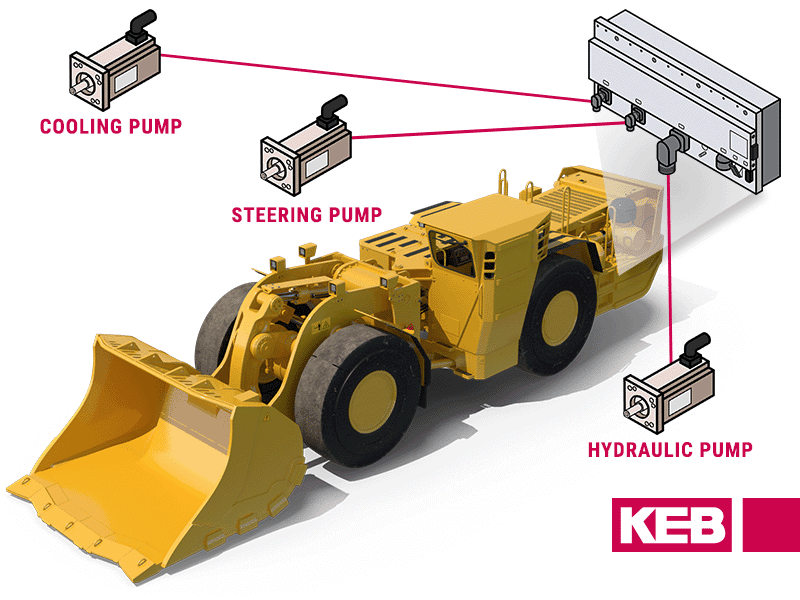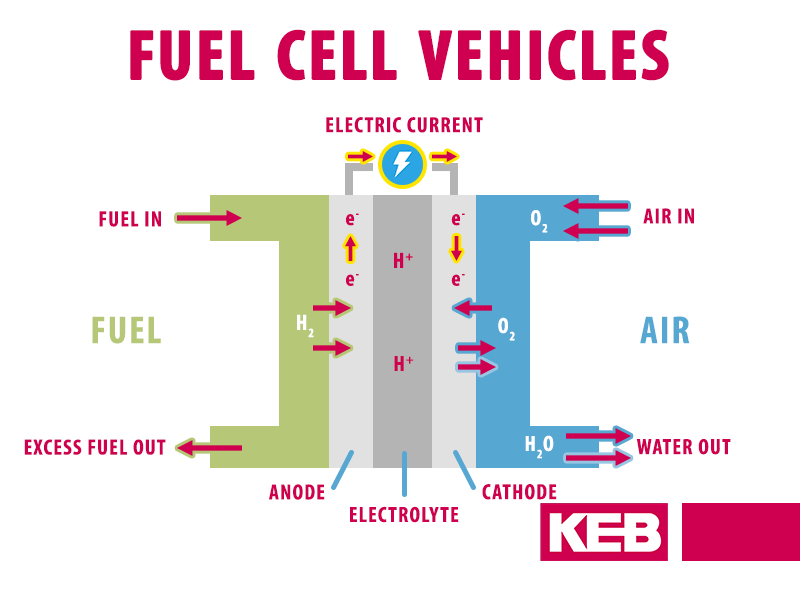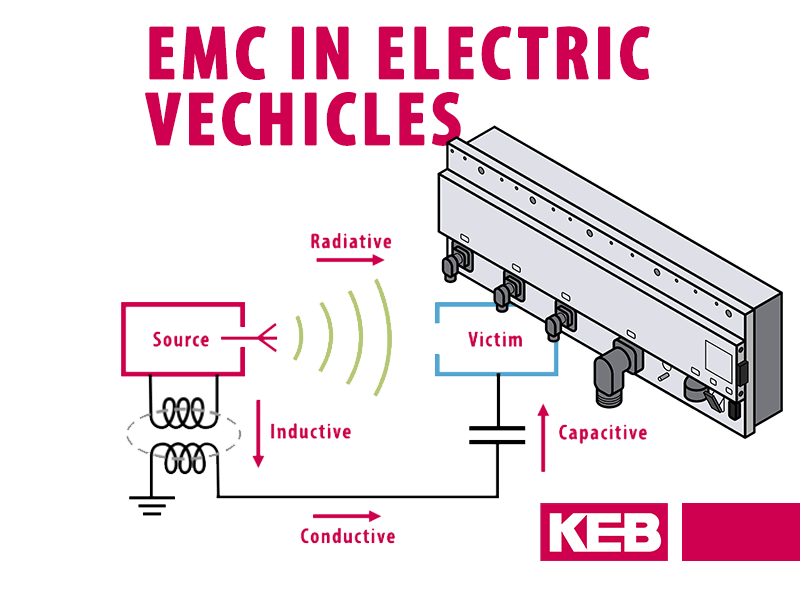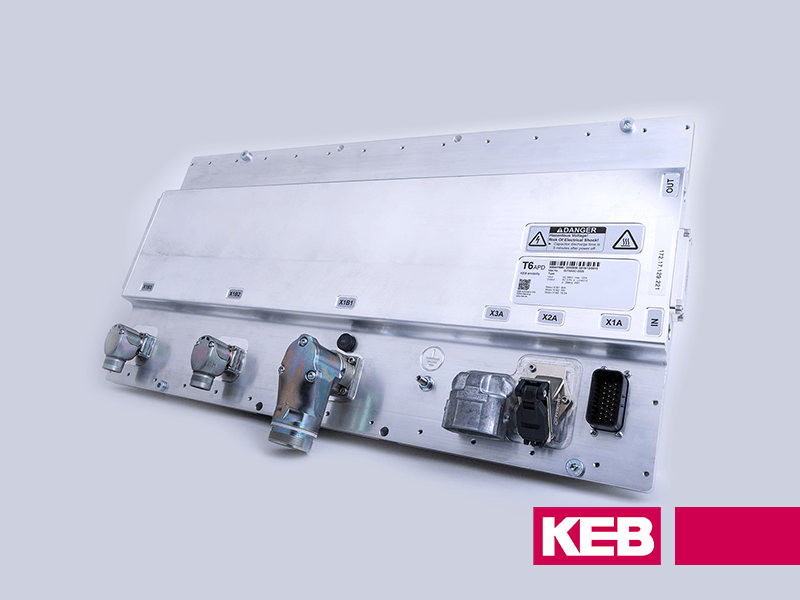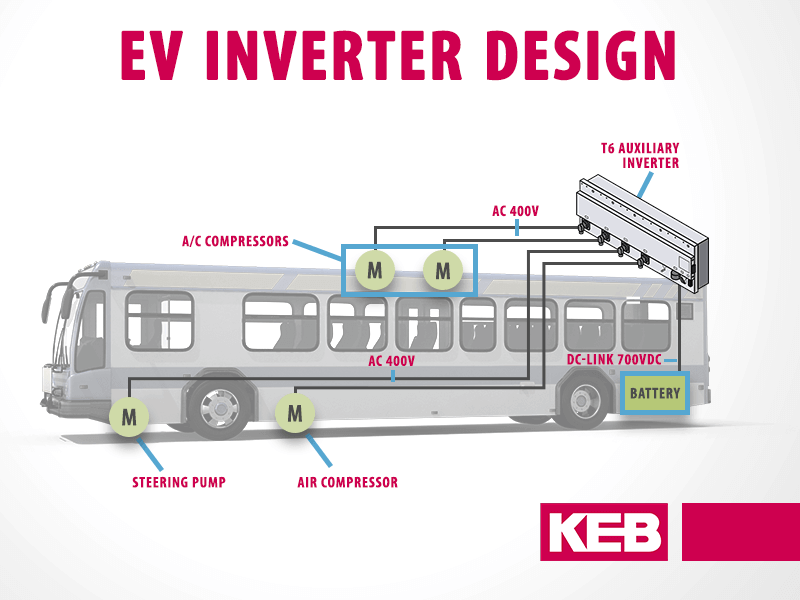The COMBIVERT T6 is a modular and scalable multi-inverter system, specially designed for auxiliary components in commercial vehicle applications. It can be configured with up to 6 inverter modules, utilizing a mixture of 3 different power module ratings. Multiple integrated units provide significant space, wiring, and cost savings.
Product Details
Components are automotive qualified in accordance with automotive temperature and vibration standards.
With an IP67, IP6K9K housing, and connectors, the T6 was designed for the harshest environments.
Each inverter axis supports the operation of a variety of motor types, including induction, synchronous PM, switched reluctance, or linear.
KEB’s motor control algorithms allow for closed-loop speed, torque, and positioning performance without the need for encoder feedback (sensorless closed loop).
An embedded main control unit (MCU) supports a CODESYS programming environment for intelligent system control.
With 2 CAN ports available, the MCU also supports a CAN communication gateway with J1939 protocol for easy system integration.
Common-mode DC EMI filters are integrated internally as standard to ensure high operational reliability in electronics systems environments.
Tech Specs
Electrical
• Module A: 7.5kW output power, 16.5A output current
• Module B: 15kW output power, 33A output current
• Module C: 30kW output power, 60A output current
• HV DC link rated voltage range: 520 … 750 VDC
• HV DC link input voltage range: 200 … 820 VDC
• Nominal DC Input Current: 120 A
• Maximum DC Input Current (60 sec.): 180 A
• Continuous Electrical Power: 60 kW
• Maximum Electrical Power (60 sec.): 90 kW
• LV DC Voltage Supply Range: 9 … 32 VDC
Mechanical
• Cooling Type: Liquid Cooling
• Coolant: Water-Glycol (50:50)
• Coolant Temperature: 30 … 60 °C
• Coolant Flow Rate: 5 … 15 l/min
• Maximum Coolant System Pressure: 2 bar
Certifications
• Type Approvals: CE, E1
• Protection: ISO20653 6K9K /DIN EN 60529 67
• Climatic Loads: ISO16750-4 Class Z (operation) / Class A (storage and transport)
• Mechanical Loads: ISO16750-3 Code L
• EMC: CE, E1 (ECE R10, CISPR 25)
Complete standards matrix available upon request
Environment
• Enclosure Class: IP67, IP6K9K
• Ambient Conditions: -40 … +85 °C
• Operating Temperature: -30 … +70 °C
Control
• Motor Types: Induction, Synchronous PM, Synchronous Reluctance, Linear
• Motor Control: Sensorless Closed Loop, V/Hz
• Control Types: Velocity, Position
Related
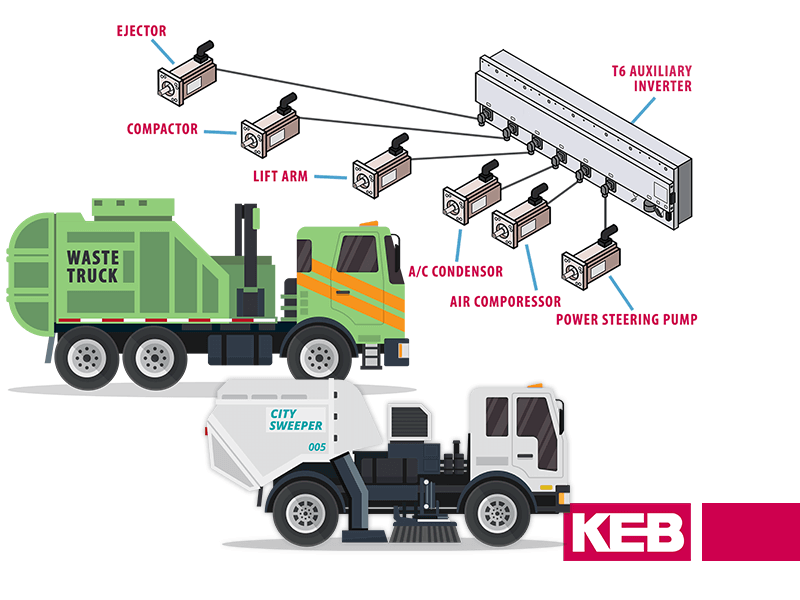
Electrifying Auxiliaries
Aside from the main propulsion motor, electric or hybrid vehicles also include many lower power auxiliaries that can be electrified.
These include power steering pumps, air compressors for air brakes and suspension, HVAC compressors, hydraulic pumps, and coolant pumps.

Designed for Commercial Vehicles
The T6 Auxiliary Inverter is designed to meet the requirements of commercial vehicle applications with the use of automotive-qualified components, E1 markings, CAN J1939 communications, and EMC compliance meeting ECE R10 standards.
Design is in accordance with shock and vibration for commercial vehicles. The production follows automotive industry quality management practices.
Typical vehicle applications include electric buses, heavy-duty trucks, refuse trucks, street sweepers, delivery vans, transport refrigeration, and mobile machinery such as agricultural ePTO implements.
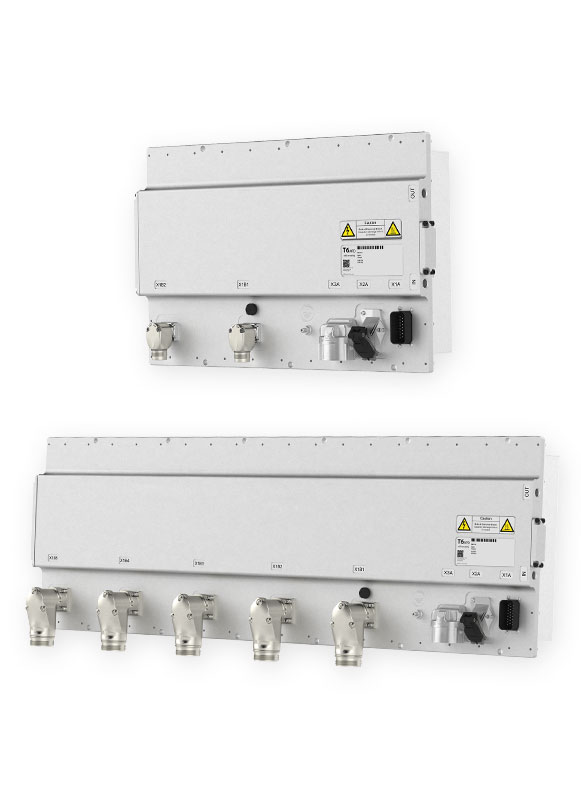
Flexible System Solution
Since commercial vehicles can have multiple auxiliaries, the T6 was designed as a scalable and modular system solution to offer flexibility for a variety of vehicle types and configurations. A system can be scaled from a single inverter output up to six independent motor controllers with modular power rating options for each.
Reduced Components and Cost Benefits
Compared to an individual inverter for each auxiliary, the T6’s scalable multi-axis design can significantly reduce redundant components such as DC cables, DC fuses, low voltage wiring harnesses, and coolant plumbing. Additionally, as the number of inverter outputs of a T6 multi-axis system increases, the cost to add an additional power module continues to go down.
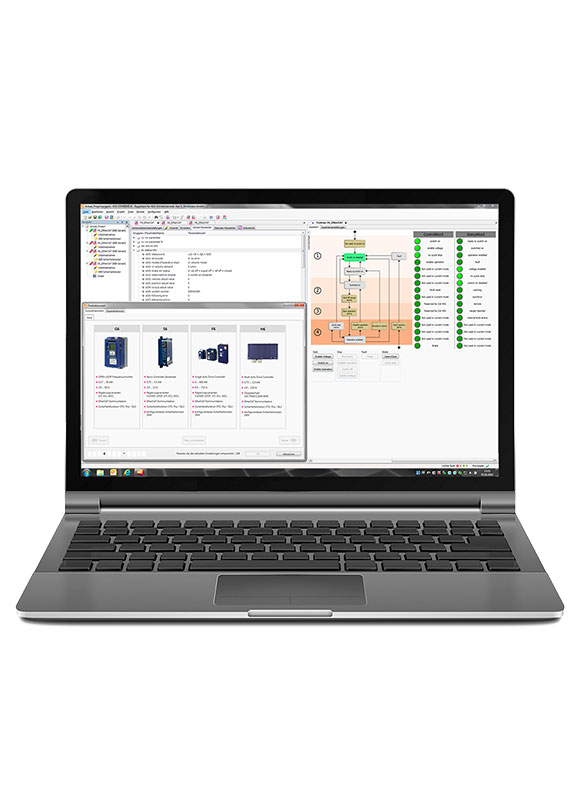
High Performance and Efficient Motor Control
KEB’s motor control algorithms are robust, high-performance, and energy-efficient. The T6 supports all types of AC motors: induction, permanent magnet (servo), and synchronous reluctance.
All motor types can be operated with sensorless control, therefore the need for an encoder or resolver is eliminated…as well as the added costs!
Sensorless motor control also provides highly dynamic speed control and torque accuracy. Closed-loop field-oriented vector control is realized using a software observer model of the motor characteristics with measured motor current and voltage as feedback for internal control loops. Sensorless vector control also operates the motor more efficiently too since the output power is based on the actual load requirements.
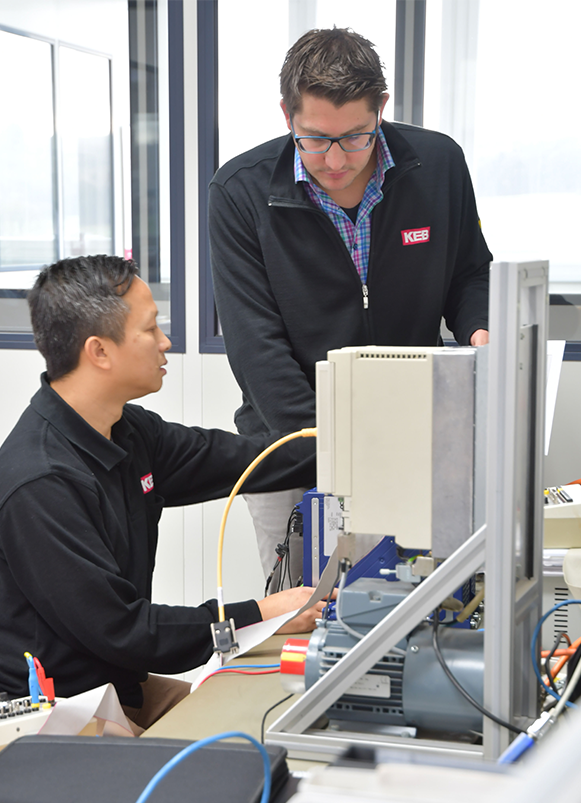
Excellent Tools and Support
Setup and integration of the T6 into the vehicle system are simple using KEB’s Combivis 6 programming environment. The program has easy-to-use wizards which guide the user through the start-up process, an automated motor learn function to quickly get motors running with sensorless control, and helpful diagnostics tools such as a digital oscilloscope and a built-in remote-support application.
KEB eMobility application engineers are also available to support customers directly. Regionally distributed in North America and Europe, they offer assistance at every stage of a project, including design concept, system sizing and selection, startup and commissioning, series production preparation, and technical and after-sales troubleshooting and support.
